These Are The 8 Best Autumn And Winter Bedding Plants Say Qualified Gardeners

Reviewed By COLIN SKELLY

Colin is a Horticulturist and Horticultural Consultant with experience in a range of practical and managerial roles across heritage, commercial and public horticulture. He holds the Royal Horticultural Society’s Master of Horticulture award and has a particular interest in horticultural ecology and naturalistic planting for habitat and climate resilience.
Autumn and winter bedding plants are a dime a dozen but plants that provide genuine interest over autumn and winter are not so common.
In this guide, we mix classic standbys and fresh original selections as we review eight plant genera or types that are autumn-winter standouts for you to explore and then summarise specific varieties of some of the plants that will provide fantastic autumn-winter interest.
Many summer bedding plants flower deep into autumn but there are also established winter-spring bedding plants as well.
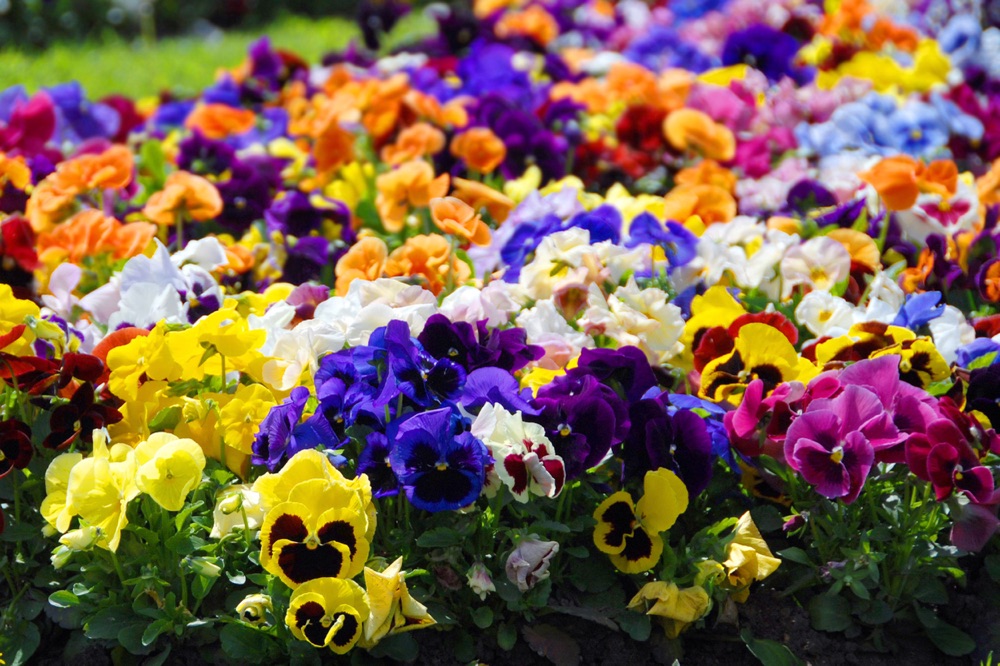
However, you may not want to be working in your garden in the frigid winter during the hustle and bustle of Christmas preparations and might want to set things up in autumn to take you clear into spring.
Fortunately, you can accomplish just that with a select number of bedding plants.
So, how to set up your garden at the onset of autumn with bona fide bedding plants whose beauty you can enjoy through to spring without any further garden work, except for the usual maintenance chores?

In order to get those autumn-winter bedding plants set up and blooming in autumn, you will need to sow seeds at least by mid-summer.
Alternatively, you can buy plugs and plant them in late summer or get potted plants and transplant them.
Here are eight bedding plants for your garden this Autumn and Winter:
1) Ornamental Cabbages & Kales

You might be wondering why we’ve started off this list of bedding plants with vegetables, but bear with us!
First, like regular cabbage and kale, ornamental cabbages and kales are Brassica oleracea varieties and though they are edible, they are not palatable.
However, they are genuinely ornamental, not because of their infrequent and plain little flowers, but, for the frilly, ruffled, richly-coloured rosettes of foliage in creams, reds, and purples that bring to mind some of those large stylised artificial flowers.
Ornamental cabbages and kales are distinct from one another but both include wonderfully colourful decorative cultivars that grow in those neat and charming rosettes.
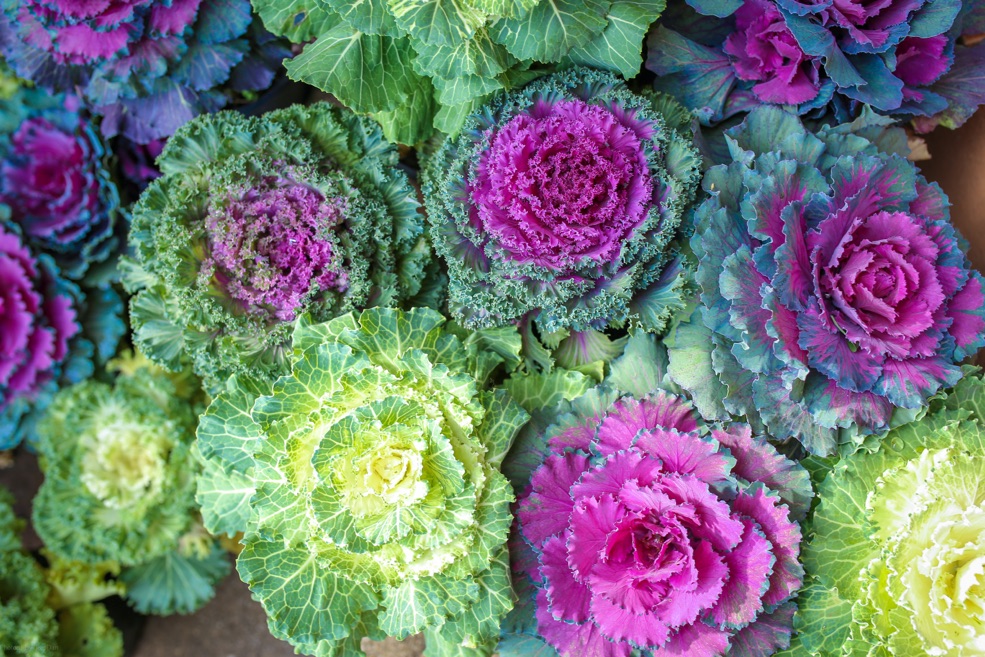
Though they are usually planted in containers, treating them as bedding plants is becoming increasingly common, and for good reason.
At 25-45cm, they just about meet the height profile, have genuine ornamental value, can be tidily mass-planted, and make bold and colourful edging and borders for beds in the autumn-winter timeframe.
A couple of frigid nights or even a frost benefits these plants because the temperature fluctuations and dips are what trigger their marvellous colourations.
Ornamental cabbages and kales may be grown from seed in mid-late summer or bought as young plants from a nursery and transplanted in autumn.1Brassica oleracea | ornamental cabbage. (n.d.). Royal Horticultural Society. Retrieved March 10, 2023, from https://www.rhs.org.uk/plants/106078/brassica-oleracea-ornamental-cabbage-wild-cabbage/details
Ornamental Cabbage & Kale Varieties
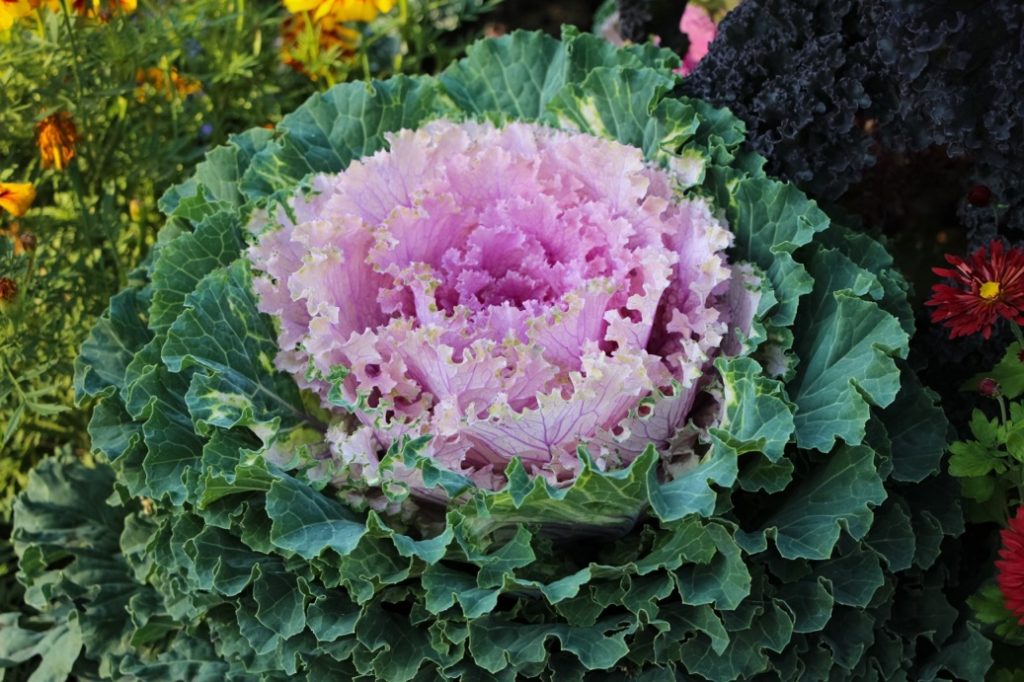
Ornamental Kale ‘Nagoya’ features a flower that is densely packed, heavily ruffled and just as heavily fringed.
It has a height and spread of only 20cm but it is billed as a bedding plant.
Available choices are white, rose (which is actually purplish), and red imp, which is magenta.
The outer leaves are a dark greyish-green in all the coloured varieties.
All three should last deep into winter and are the best bet for covering autumn and winter.
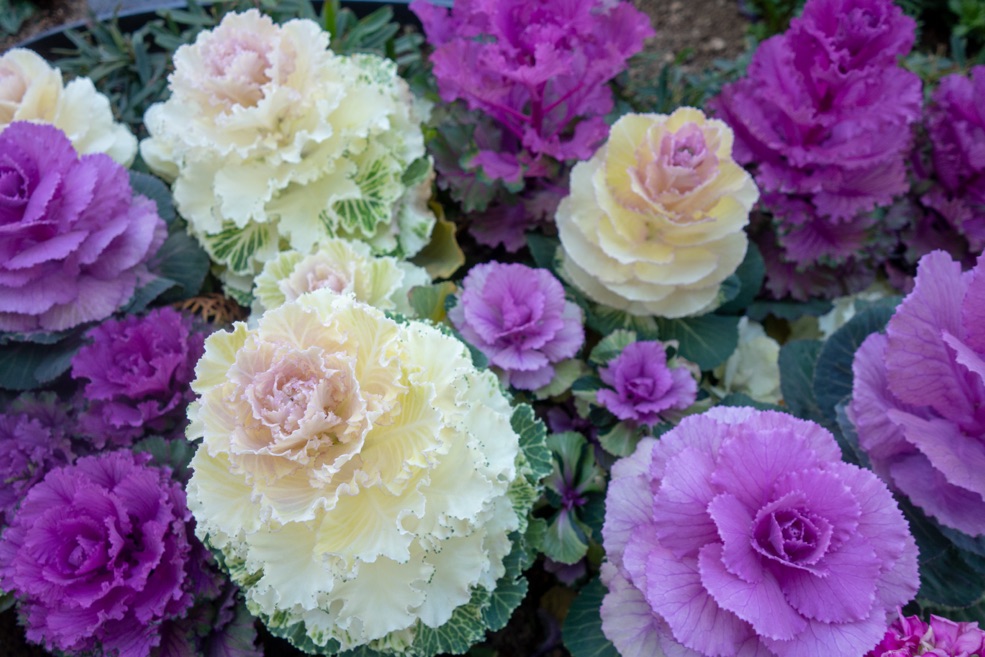
‘Northern Lights Mixed’ is classed as an ornamental cabbage but it also has properties of ornamental kale, as it is heavily ruffled and has frilled edges.
It grows to about 23cm and has a spread of about 40cm.
Its ‘flowers’ are rather more open and not as densely layered as some other varieties.
Colours include a rich cream, rose pink, and magenta-purple and should take you into January with the right care and protection, and perhaps beyond.
2) Pansies
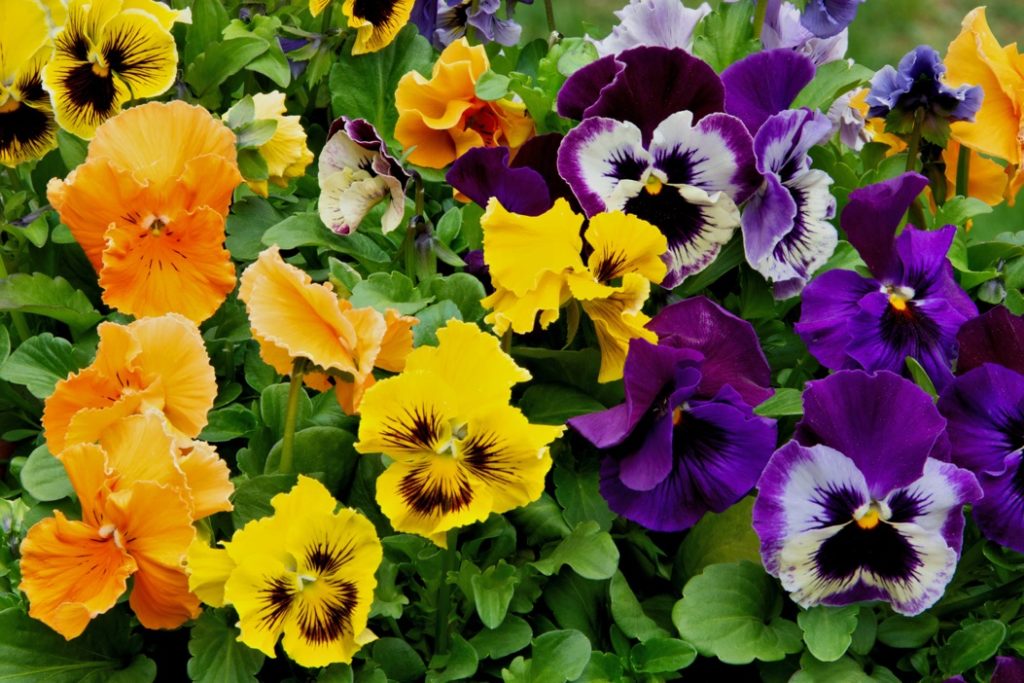
Pansies are the flowering plants one usually sees being touted as first choice for autumn-winter bedding.
Pansies are often thought of, correctly so, as winter-spring bedding plants.
Most varieties flower through spring, entering summer and some effective re-blooming varieties flower during autumn, go dormant in winter, and flower again in spring.
There are even a few varieties that will flower during early or late summer in temperate climes.

It’s important to note that pansies grown for winter flowering are sown in autumn but they will not flower in autumn and effective re-blooming autumn pansies will take winter off.
In regions of Europe where the temperatures stay within a narrower range through autumn and winter, several pansy varieties can provide running floral interest through both seasons.
It is a different matter in the British Isles with sharper climatic changes.
In the milder regions of the United Kingdom along the southern and south-eastern coasts, particular pansy varieties should very well flower all through autumn and winter.
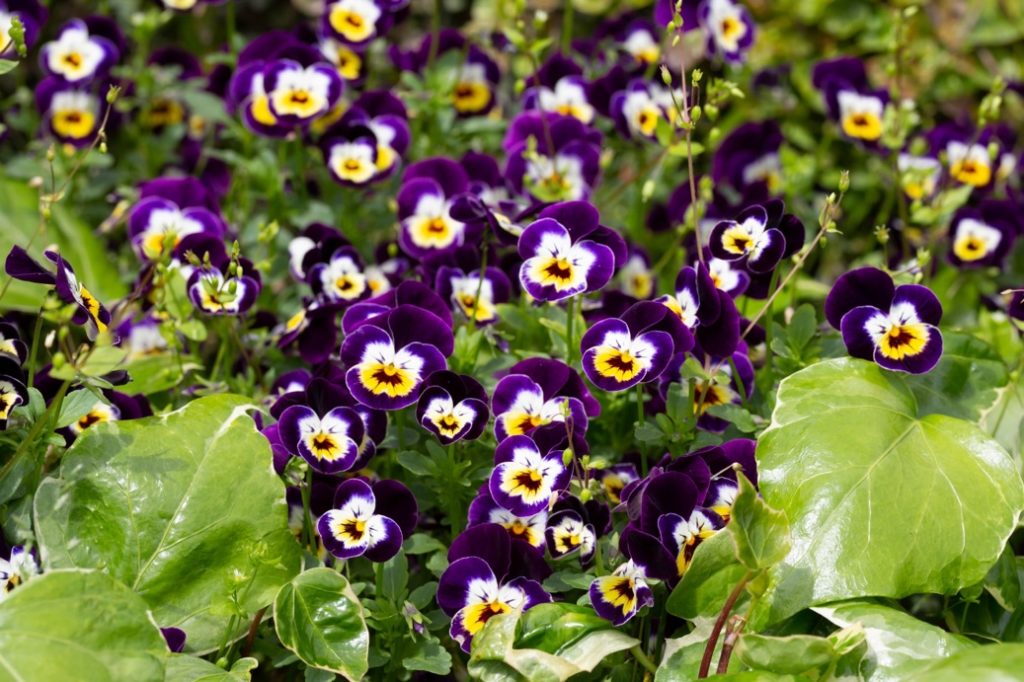
We suggest the matrix series, the cool wave series, and the nature series to get the best chance of an autumn-winter bloom.
Pansies are easy to grow from seed and bear among the most brilliantly-patterned flowers, so it is little wonder they are among the most popular bedding plants for this time of year.
3) Violas
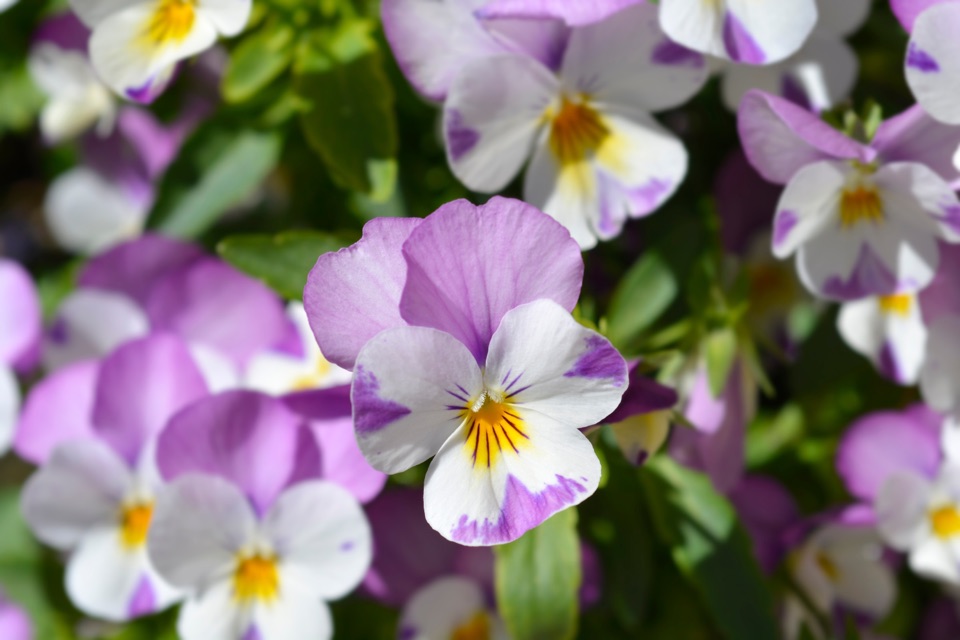
Violas are billed almost as much as pansies as autumn-winter bedding plants.
Oddly enough, the species Viola tricolor as well as many varieties of violas, bloom from sometime in spring to some point in autumn.
However, series and varieties have been developed especially for cool-season flowering and these will reliably give you richly-coloured charming little flowers through autumn and winter across most of the country.
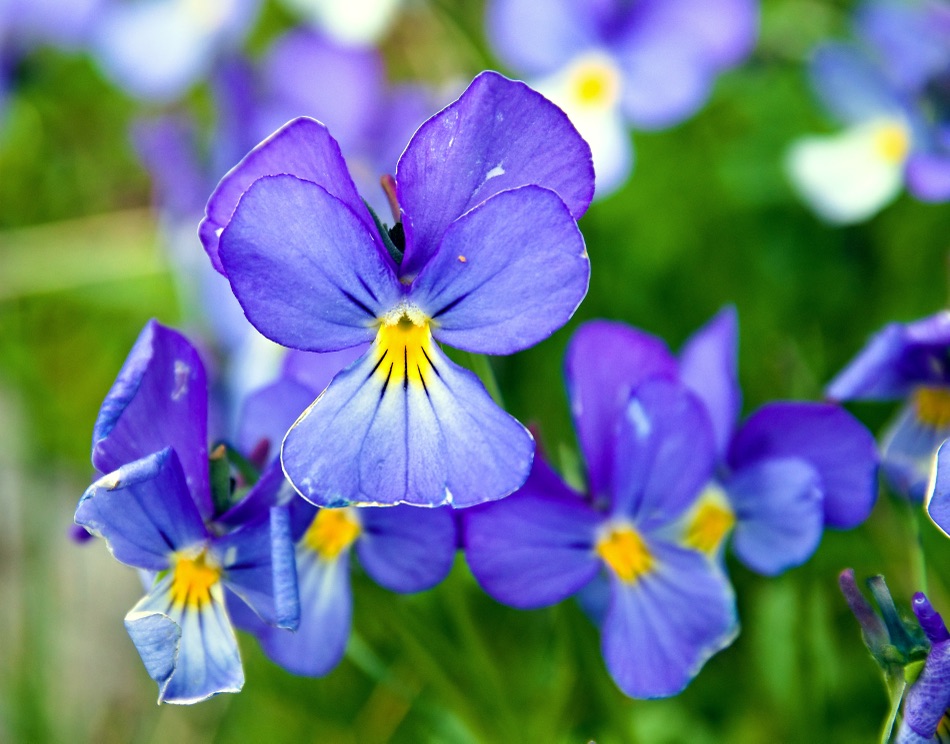
Violas have compact profiles and mounding forms that rise to 20-40cm.
Their foliage is quite attractive, being of a deep, rich, green hue, sometimes with wavy or scalloped leaves.
As for the bilaterally-symmetric flowers, they are tiny knockouts.
They are usually in cream, yellow, purple, violet and white tones, and display delightful flecks, streaks, daubs, and gradations.
Though Violas’ profile makes them most suitable for edging, consider the lushness of their foliage, the charming, dainty flowers, the colourful patterning, and the floriferous nature of the plant.
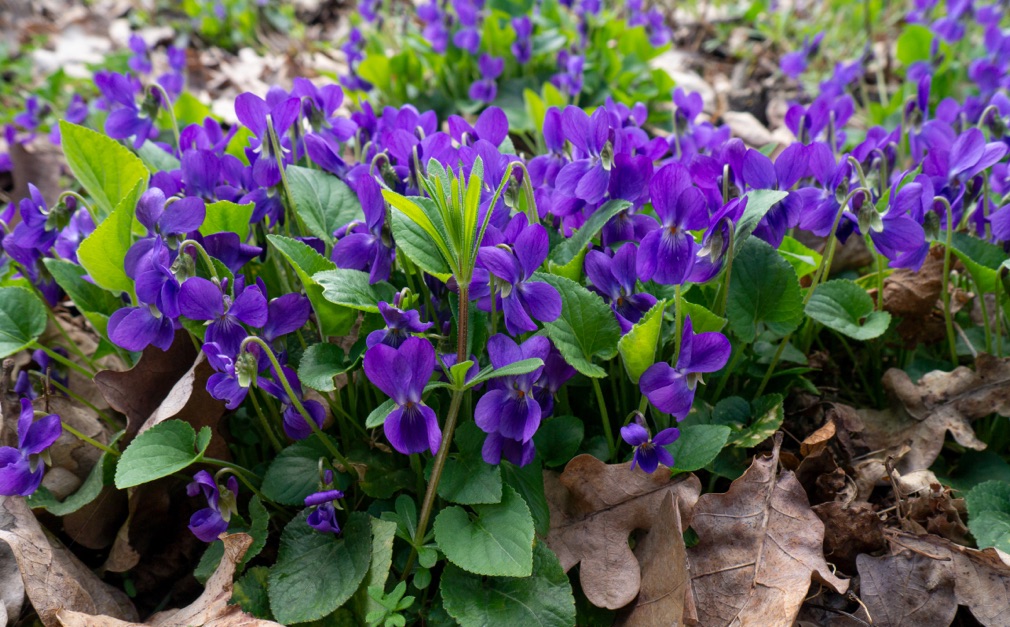
These qualities allow them to be deployed as bedding plants, especially when you have few other alternatives.
Like pansies, Violas too are child’s play to grow from seeds.
Though they may not be quite as popular and as well-known as pansies, for autumn-winter flowering plants they are shoo-ins and are hard to beat.
In general, they are an excellent choice for UK gardens in the autumn and winter seasons.
Viola Varieties
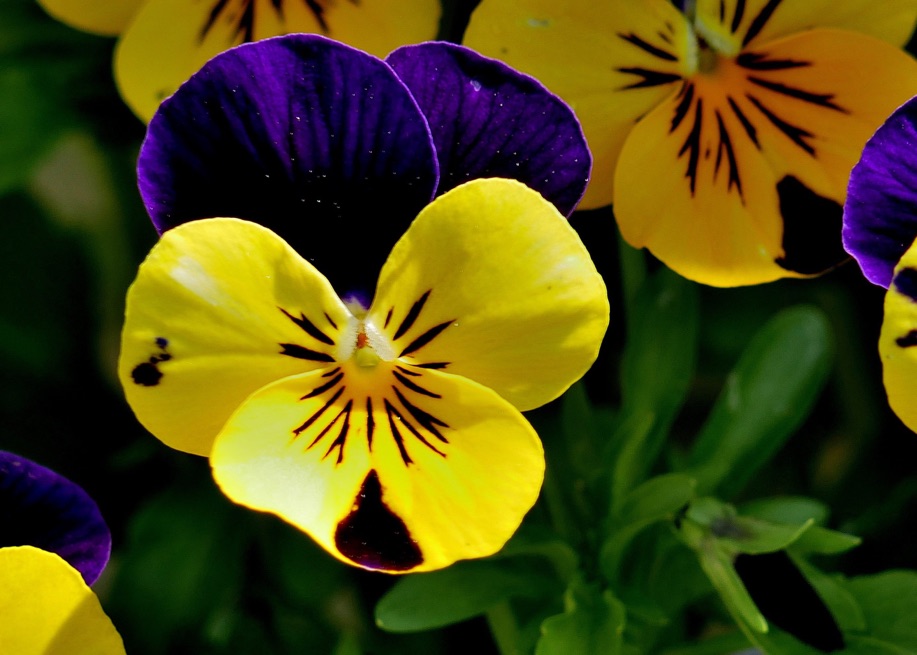
Though the mother species for Viola varieties, Viola tricolor, blooms in nature from spring to autumn, Violas have become so associated with the cool season and even with winter flowering that it’s important to consider other varieties.2Viola tricolor. (n.d.). Royal Horticultural Society. Retrieved March 10, 2023, from https://www.rhs.org.uk/plants/19017/viola-tricolor/details
The Sorbet series varieties attain heights of 10-15cm and spreads of 15-30cm.
These F1 hybrids bloom prolifically, are available in many patterns, in numerous tones of purples, blues, yellows, and oranges, and are scented.
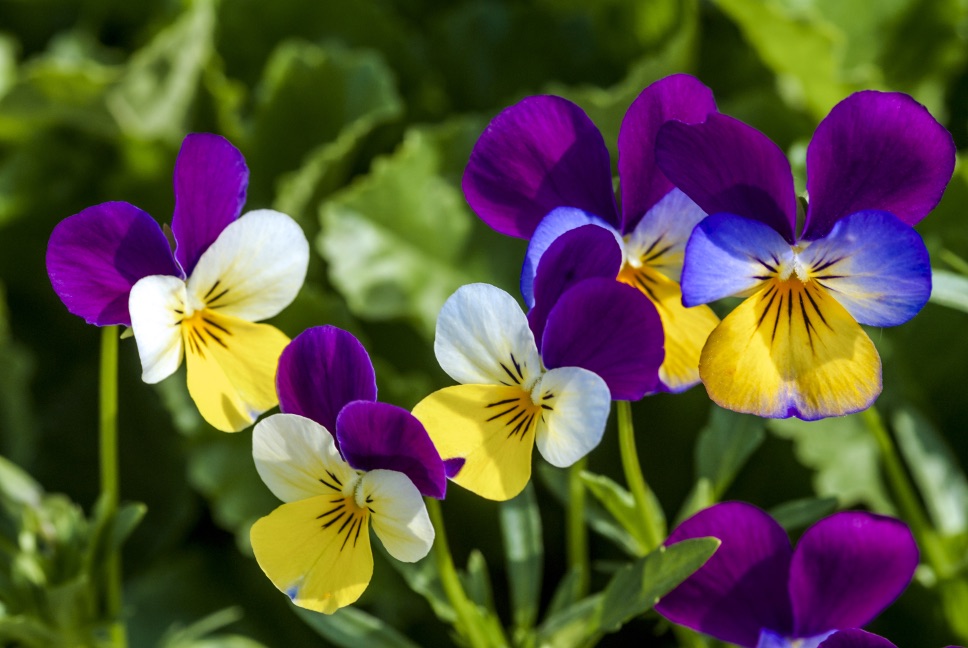
Though they will take part of the winter off in very cold regions, they will bear flowers during the beginning and end of winter.
In not-so-cold regions, they will flower sporadically through the winter.
The Celestial series varieties, hybrids of Viola cornuta and V. tricolor, grow to 15-20cm and spread to 15-30cm.
They are available in yellow, purples, blues, and blush tones in an amazing range of patterns with many of the shades on the gentle, pastel side, rather like heirloom Violas, and are also fragrant.
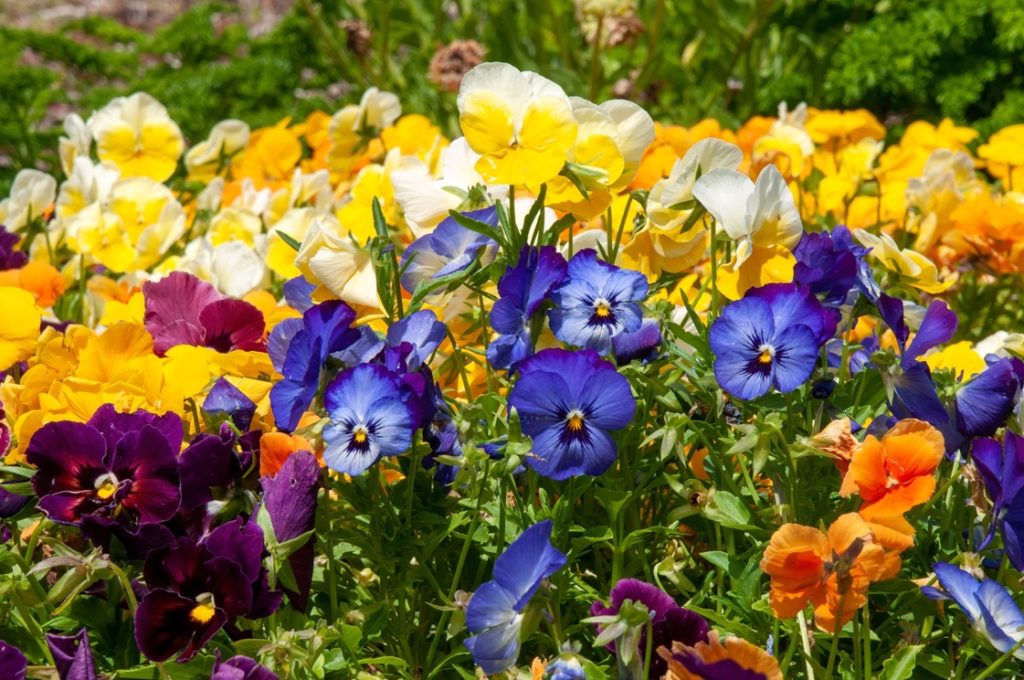
Varieties have somewhat diverse flowering windows so pick the right ones, such as ‘Northern Lights’ and ‘Twilight.’
As either series’s different varieties will perform somewhat differently from each other, it is worth noting that if you mix and match a handful of varieties, you will be certain to enjoy these cheerful charmers all autumn and winter long.
4) Cyclamens
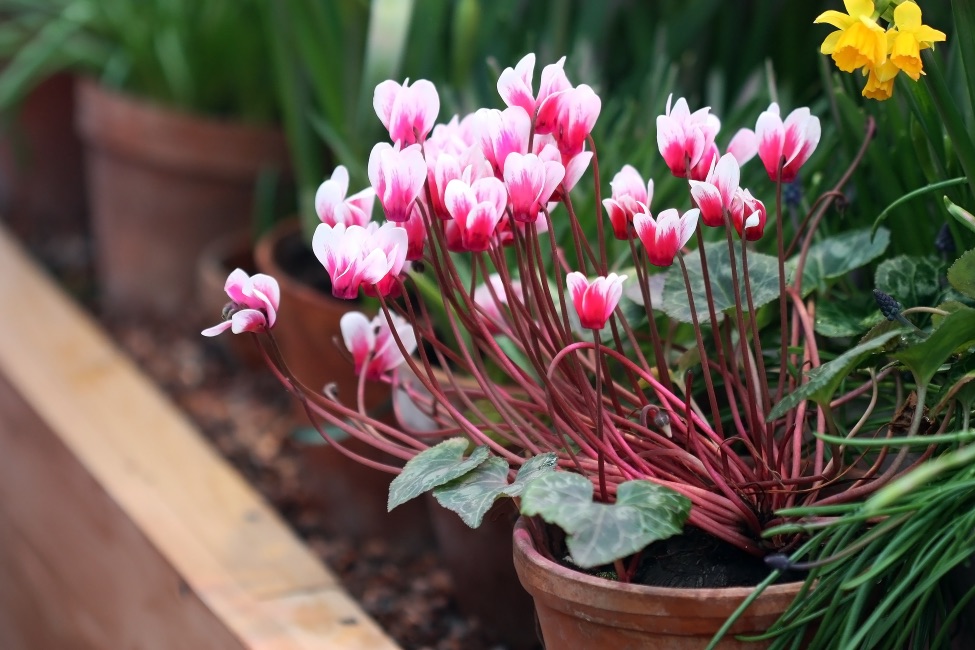
Cyclamens are probably an unfairly neglected group of plants and do not rank anywhere in the popularity sweepstakes.
They are tuberous perennials that take off in summer.
As members of the primrose family, most of them flower in winter or spring, but there are some things to consider before opting for this plant.
Firstly, these plants are commonly grown in pots and window boxes rather than in beds, and there’s a reason for that: they’re tiny.
They only grow to 10-20cm without much spread, making them a brilliant choice for edging beds – provided you can grow something else in the bed!
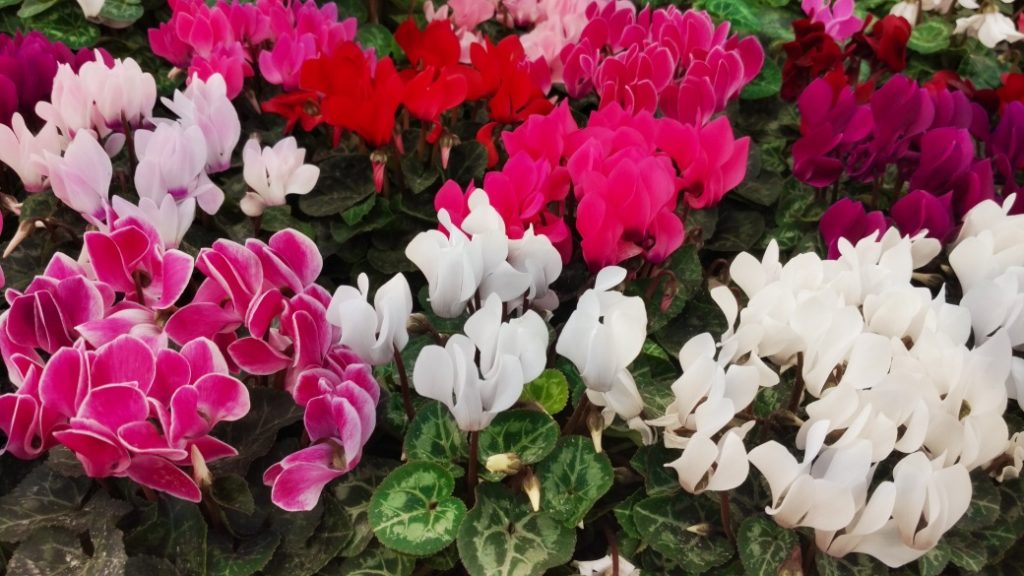
In the autumn-winter timeframe when few plants will give you much joy, you may as well plump for cyclamens.
Secondly, though cyclamens will not bloom in autumn in most regions of the United Kingdom, the foliage is truly attractive in its own right.
The leaves are heart-shaped to rounded, are a deep, glazed green, and often have a sheen.
In addition, some varieties’ leaves are prettily mottled, whilst other varieties’ leaves are as prettily silvered.

However, some cyclamen varieties will produce flowers from some time in autumn, more so in the colder regions of the country.
If you’re in the Highlands or the midlands, cyclamens are for you!
Once they start blooming, they will carry on clear into spring.
Probably the best thing about these plants are the dazzling, vivid hues of their small flowers and the way they keep blooming.
So, though it may be unorthodox to grow cyclamens as bedding plants, give it a shot.
In the grey gloom of winter, these little flowering plants will light up your garden with intense pinks, magentas, and reds.
Cyclamen Varieties
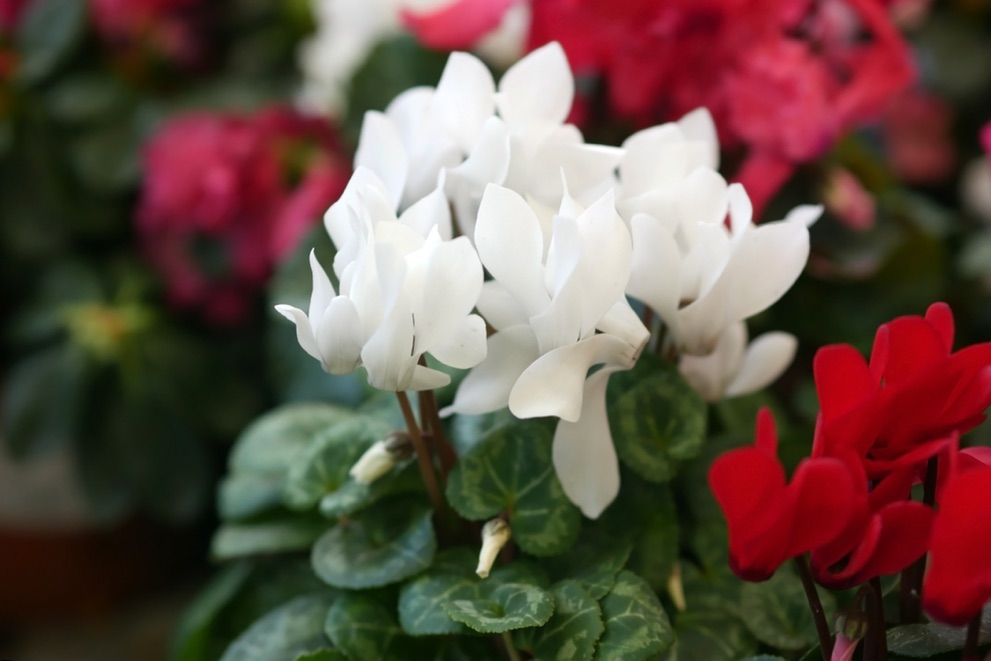
Cyclamens are tuberous perennials hailing from the Mediterranean basin through to the Balkans and Iran and mainly flowering during the winter.3Cyclamen. (n.d.-b). Kew Royal Botanic Gardens. Retrieved April 17, 2023, from https://powo.science.kew.org/taxon/urn:lsid:ipni.org:names:32774-1
They are sometimes presented as autumn-winter interest bedding plants, and there are two or three varieties that are able to do the job.
They grow to only about 10cm so, very frankly, at best they can be used for edging and cannot strictly be considered ‘bedding plants’, but they definitely make excellent groundcover plants.
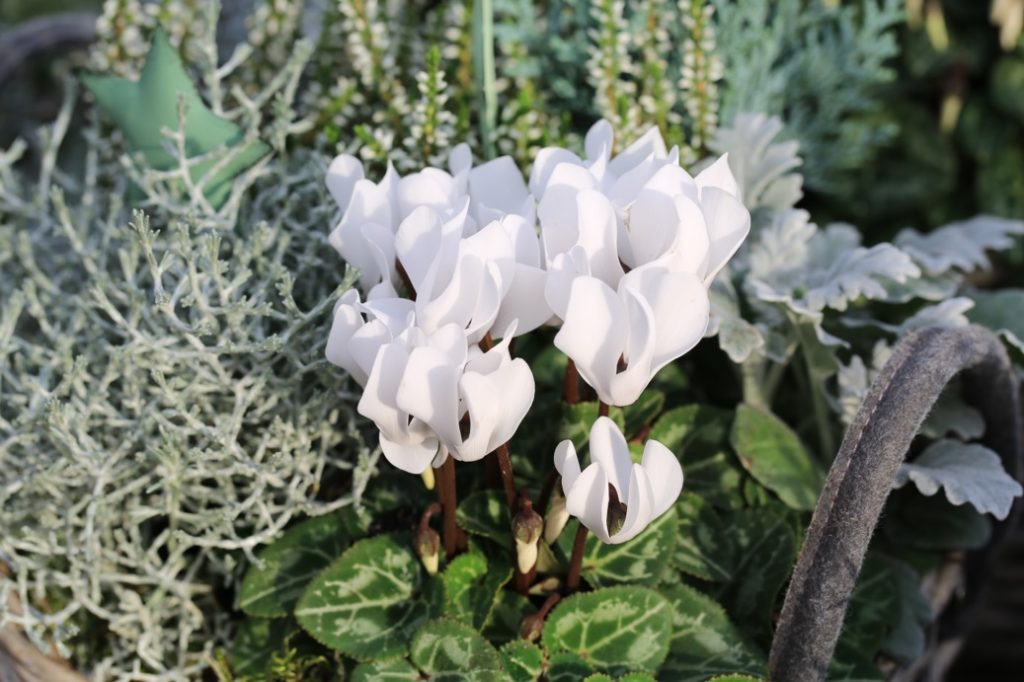
The cyclamen Silver-leaved group bears delightful little purplish-pink flowers all through winter, but not through autumn, although you will probably start seeing them in November.
However, these plants have smoky green rounded leaves with a wonderful silvering, like a glaze, and this foliage will decorate your bed from the dot of autumn onward.
Cyclamen coum ‘Meaden’s Crimson’ has very variable foliage, though it too will adorn your bed throughout autumn.
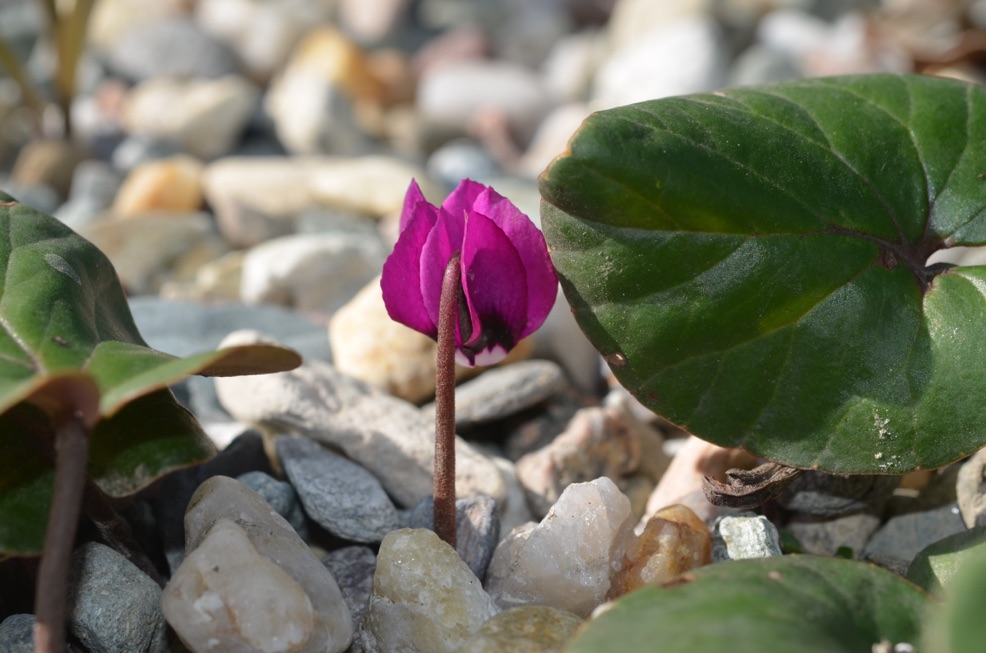
The heart-shaped leaves may be rich green, smoky green, or mottled.
The small flowers are of sedate rose pink to vivid purplish tones, and the pedicel’s colour matches that of its flower.
This variety too will take you into spring and although exactly when these cyclamens start blooming is an open question, they’ll start appearing no later than November and you may well get flowers earlier in colder parts of the country.
5) Chrysanthemums

Chrysanthemums are very much proper bedding plants that are suitable as the ‘main attraction’ and, furthermore, are very popular autumn options for beds.
Unlike many make-do autumn-winter bedding plants, chrysanthemums produce good-sized flowers that are a match for those of any summer annual.
They are disk-shaped or salver-shaped, in single or double form, and come in rich and vibrant tones of yellows, pinks, oranges, and reds.
Also, the plants very much meet the height and form profile for centrepiece bedding plants.
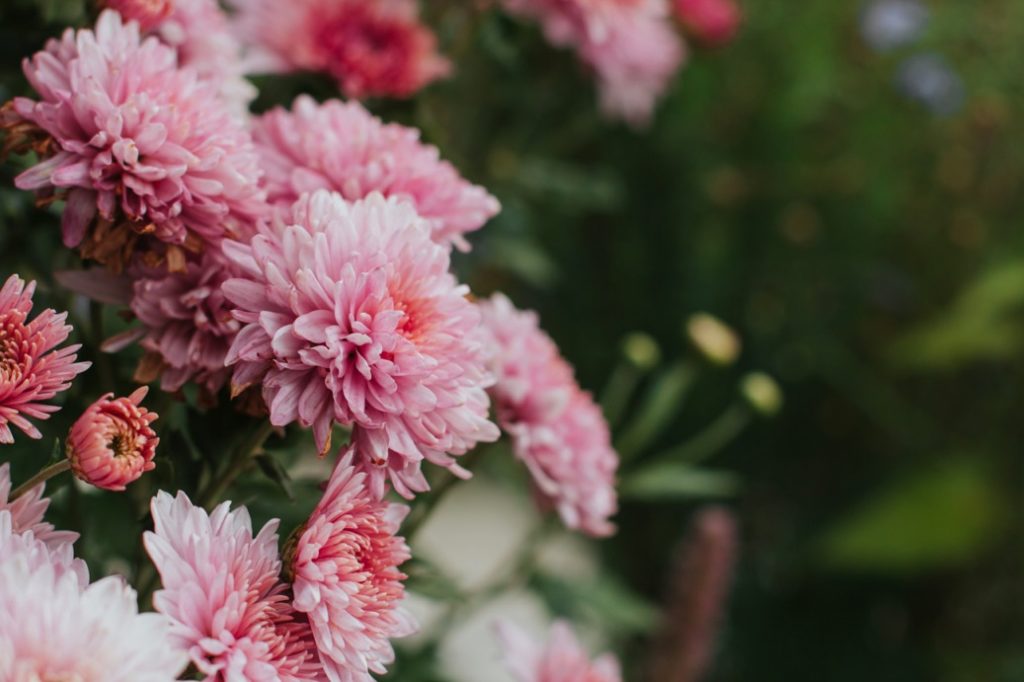
However, there’s a catch.
The varieties that bloom in autumn for the most part are tender, deciduous plants that will not make it through British winters.
For most varieties to continue through winter, they would need to be grown in a heated greenhouse which would defeat the purpose of having them in your garden bed.
In addition to this, the varieties that are frost-hardy or even just hardy perennials bloom in summer or spring-summer.
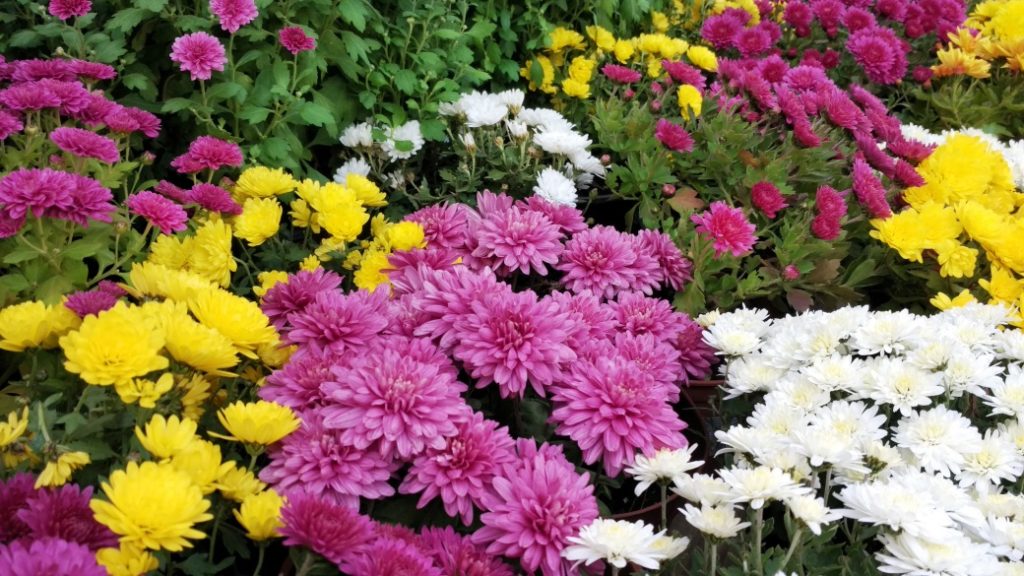
Here again the answer lies in a couple of variables: the particular varieties and your location in the United Kingdom.
If you are located in a not-so-cold region in the UK, especially if you’re along the southern and south-eastern coast, and you select your Chrysanthemum varieties judiciously, you’re halfway home.
Be sure to put a good layer of mulch around the plants and, if you protect them with horticultural fleece if and when the weather turns particularly frigid, there is no reason that these plants cannot grace your bed with flowers halfway into winter.
Chrysanthemum Varieties
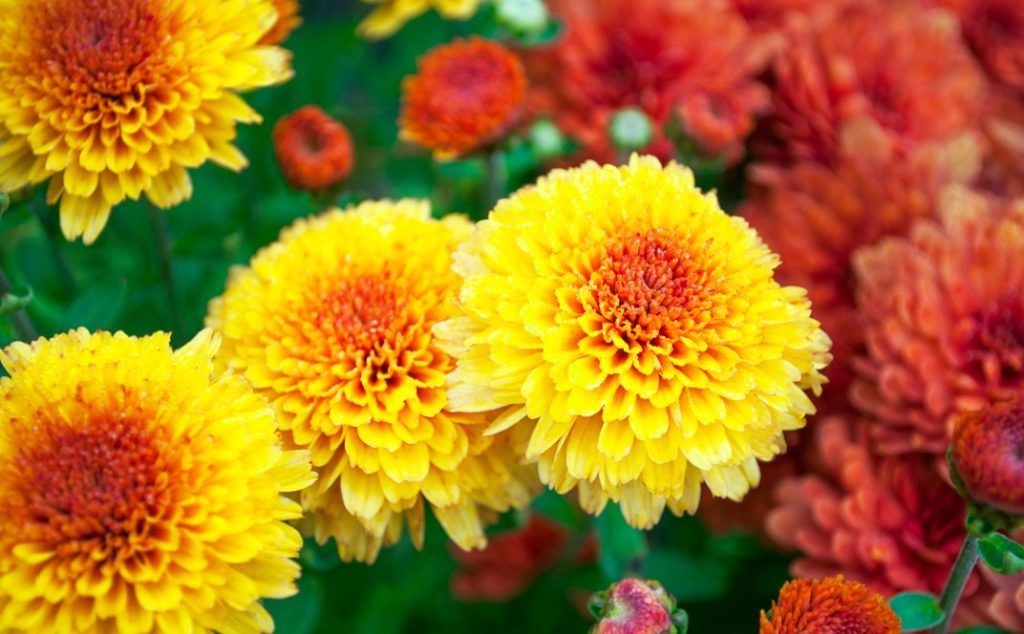
Yes, we have bona fide autumn-winter bedding plants; these are in the form of three chrysanthemum varieties and they are wonderfully diverse.
‘Paul Boissier’ is a big plant of bushy habit and rises to an impressive 1m, with the flowers measuring at about 5cm.
They are semi-double with a rich, glowing orange hue.
How far their autumn blooms continue into winter very much depends on your climate and region, whether they are in a sheltered spot, and whether you protect them with mulch and fleece.
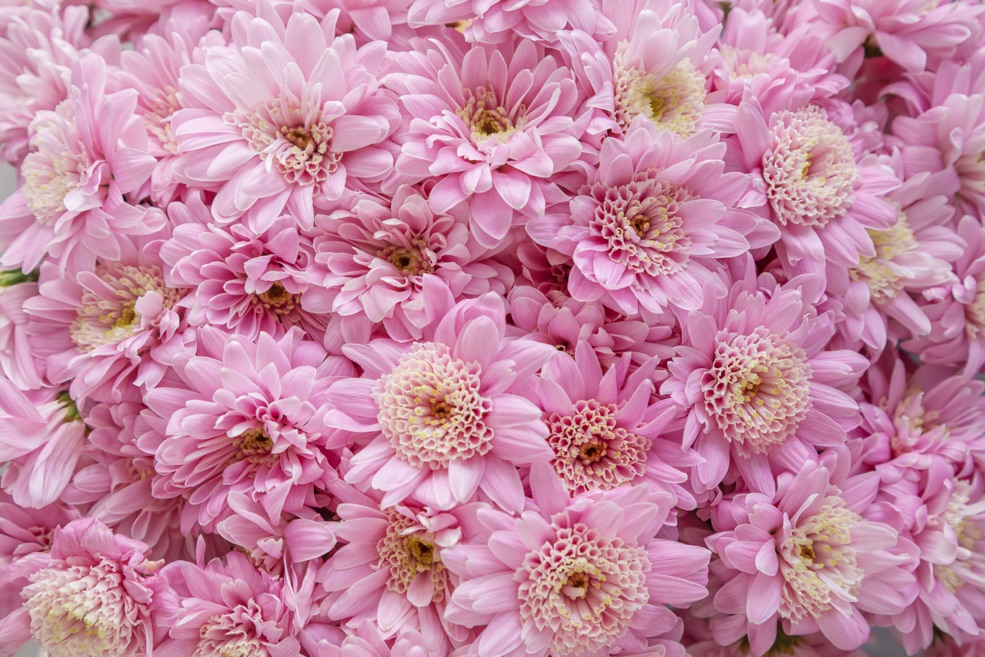
‘Nell Gwynn’ is of an upright form and it too reaches up to 1m.
It also bears semi-double flowers which are disk shaped and their dusky, chalky pink hue is wonderfully set off by the bright yellow centres.
They should take you some way into winter and, the more they are protected and sheltered, the deeper they will go into the winter chill.
Chrysanthemum yezoense, or ‘Hokkaido chrysanthemum’, is your confirmed ticket to autumn-winter blooms.
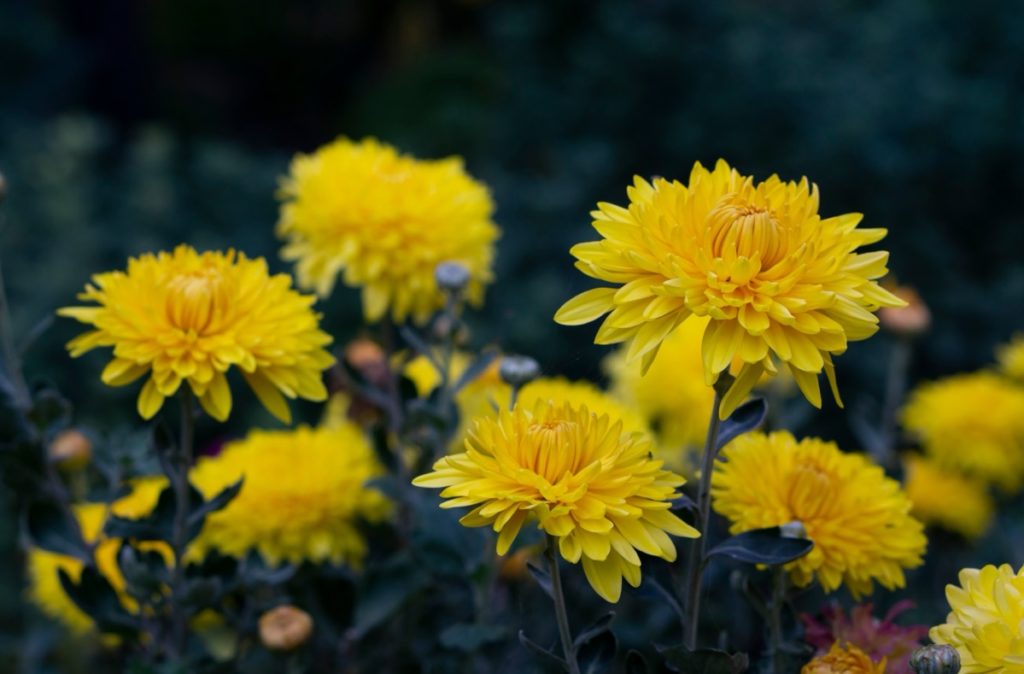
However, this plant is only H4 hardy, so you will need to protect it in colder regions and during severe winters.4Chrysanthemum yezoense | Hokkaido chrysanthemum. (n.d.). Royal Horticultural Society. Retrieved March 10, 2023, from https://www.rhs.org.uk/plants/122802/chrysanthemum-yezoense/details
It is a bushy perennial and produces a simple flower that very much resembles a daisy, with the standard white petals and a yellow centre.
However, it is prolific and bears flowers from sometime in summer clear through to the end of winter.
Plant all three and you’re set for both, floral beauty and autumn-winter coverage.
6) Heucheras
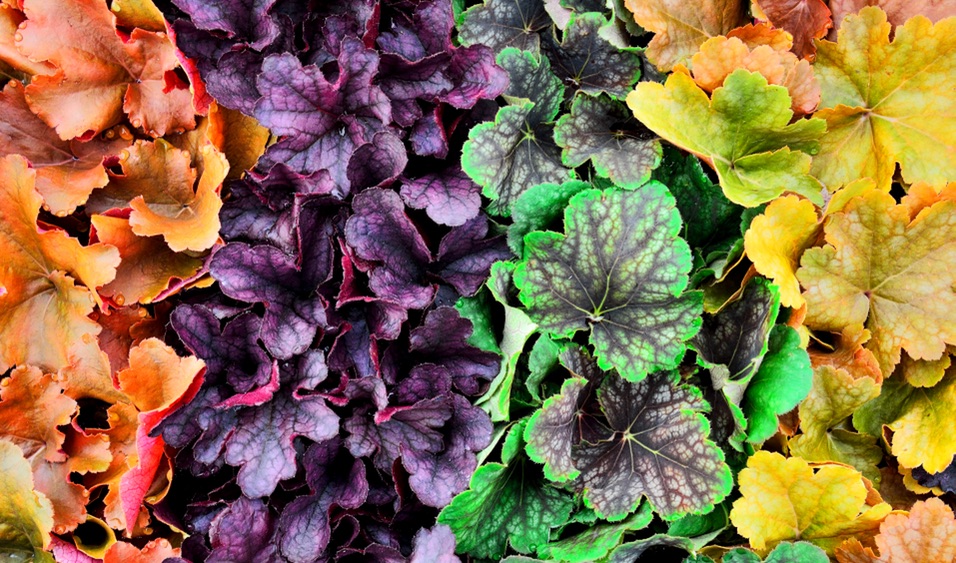
Heucheras may not be proper bedding plants and do not flower during autumn-winter, but their foliage provides brilliant colours all through autumn and winter that cannot be beaten.
These plants are fully hardy, clump-forming evergreens whose prime attraction is, not the smallish summer flowers, but their vibrant foliage.
The leaves are attractively shaped and can be lobed, scalloped, toothed, ruffled, curly, or some appealing combination thereof.
“One of my favourite Heucheras is H. americana, a large leaved species that has a white flower spike up to 1m high (lots of cultivars also available in autumnal shades),” shares Colin Skelly, a Horticulturist Consultant.
“The white veined leaves mature to dark red veining and look great well into winter, although will need a tidy up in late winter or early spring.
“As with all Heucheras, watch out for vine weevil larvae, which have a liking for their roots.”
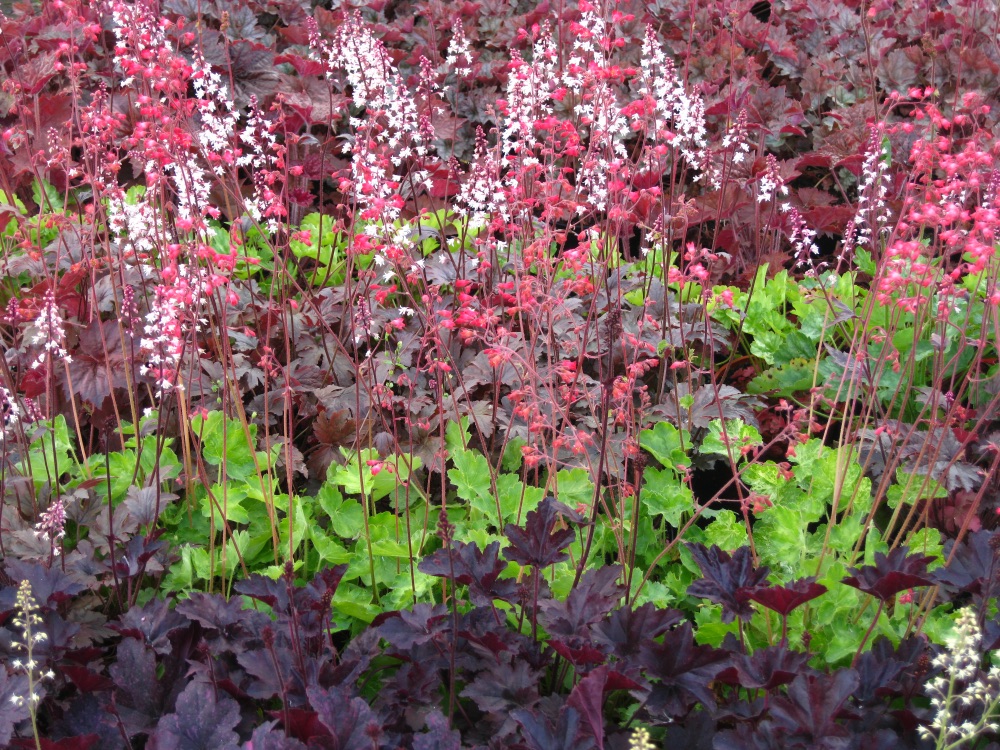
Many display prominent veining to the point of marbling and some varieties’ leaves are variegated or effectively bi-coloured.
As for those colours, besides greens, they include pinks, yellows, oranges, reds, purples, silver, rust, bronze, and reddish browns.
Also, as the temperature changes, the leaves go through various tints and tones so you get an ongoing colour show.
Though many varieties are up to 30cm in height, some rise to 50cm and a few even exceed that.
In view of this variation in height, you could even potentially design an entire bed with heuchera plants, using them for the centrepiece, border, and edging!
Finally, heucheras give you all this with much less care than the competition, as these tough evergreens are probably the easiest to care for in this list.
7) Chimonanthus praecox
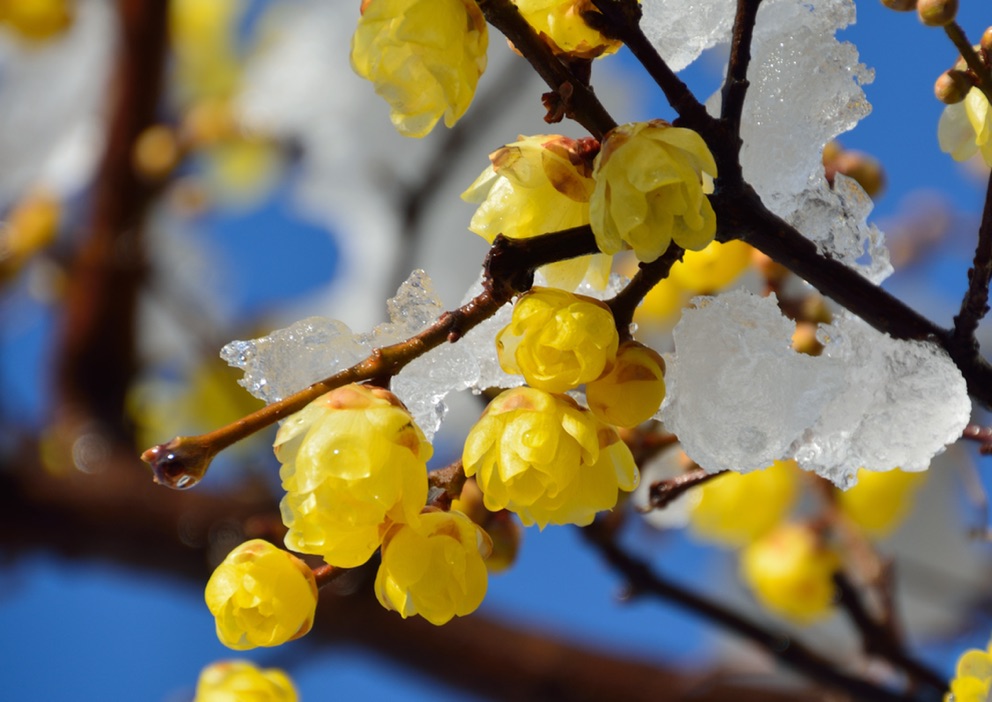
For something very much off the beaten track, try Chimonanthus praecox, also known as wintersweet.
If gardeners sometimes grow what is essentially a groundcover as a ‘bedding plant’ you can grow a 2m tall much-branched bush as a ‘bedding plant’ too – simply site it in a bed right to the rear against a wall.
Technically a deciduous shrub, it is effectively an evergreen, as it will give you foliage, flowers, or little fruits nearly all year round, with autumn and winter covered!
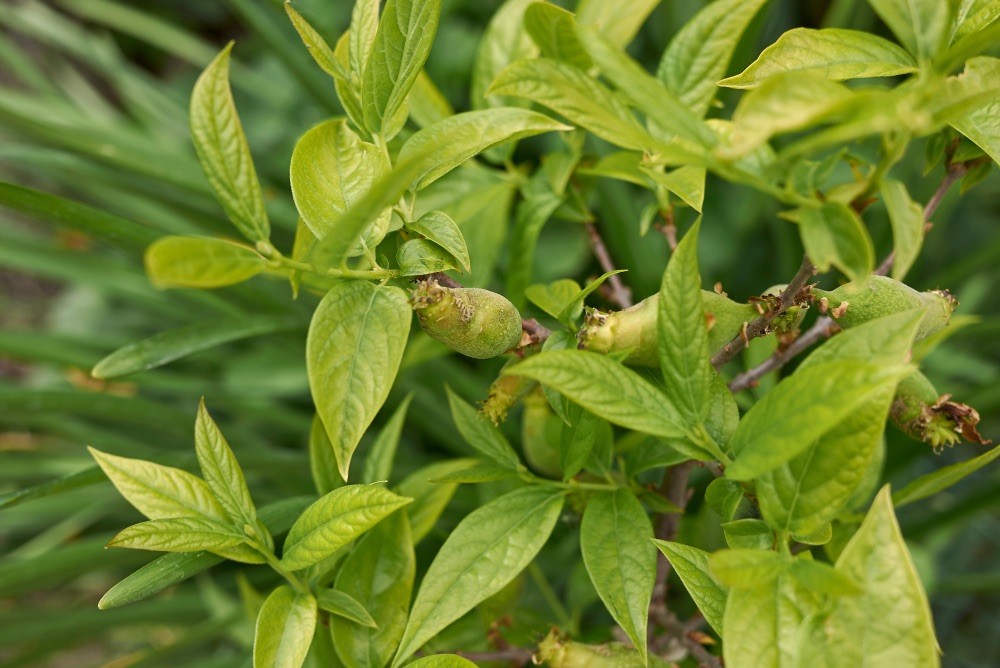
The rather unusual bell, star-shaped flower has two sets of tepals, enclosing an insignificant inner flower.
The narrow, tapered outer tepals are pale yellow and the inner ones are vibrant wine to maroon.
These pretty flowers are also very fragrant and last all winter through, but autumn has its own small gifts: the bush produces small fruits that start green and change to a beige shade, sometimes even to a red.
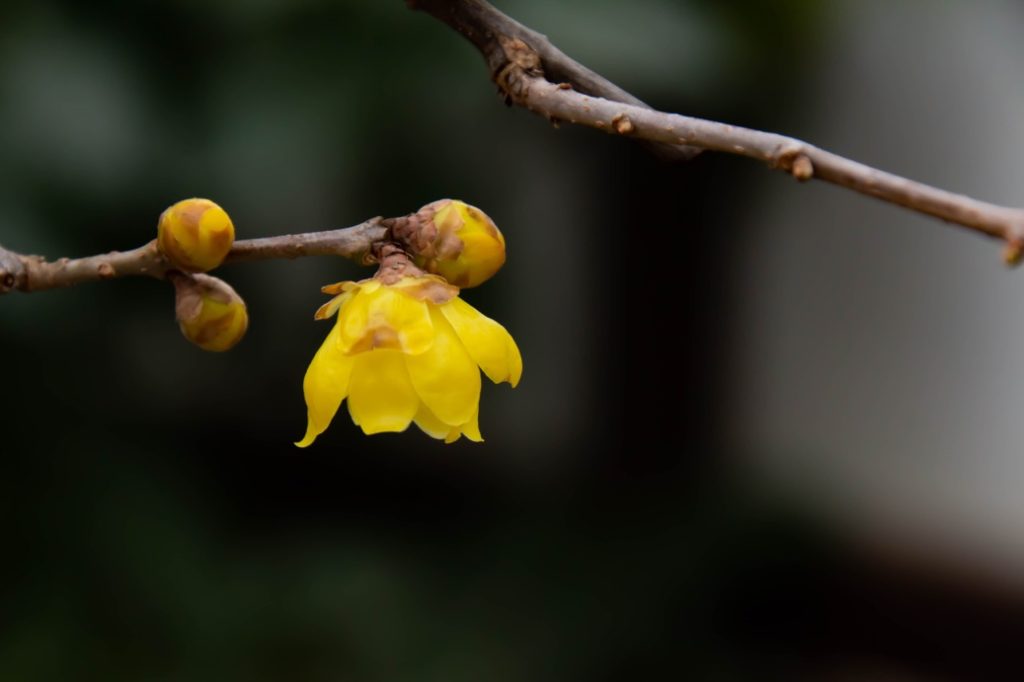
Chimonanthus praecox is hardy to H5 so it will do well for you almost throughout the UK, but it should be sited in a sheltered spot and protected in severe winters.5Chimonanthus praecox | wintersweet. (n.d.). Royal Horticultural Society. Retrieved March 10, 2023, from https://www.rhs.org.uk/plants/29215/chimonanthus-praecox/details
Wintersweet can become straggly, so pruning and trimming will be necessary.
In fact, the right type of pruning will allow you to keep this shrub looking less like a bush and more like a bedding plant – which is what this article is all about.
8) Camellias
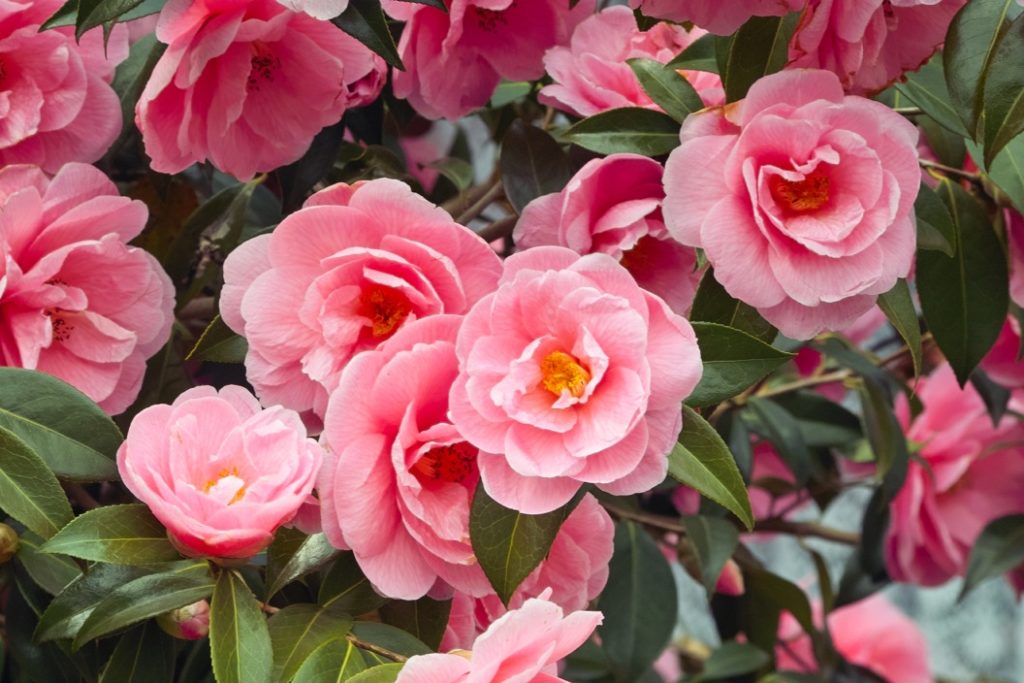
One may not often see ‘springtime’ camellias billed as autumn-winter plants, but some varieties fit the bill.
Camellias are evergreens that can develop woody stems and grow to become little trees.
Indeed, some varieties are best suited for this purpose, others are ideal for specimen plants, and still, others are perfect as centrepieces for beds.
Our focus is to identify a few varieties that will give you autumn-winter blooms to compete with the best summer flowers.
The varieties of choice are all cultivars of Camellia sasanqua, long-lived evergreen perennials of an upright habit.
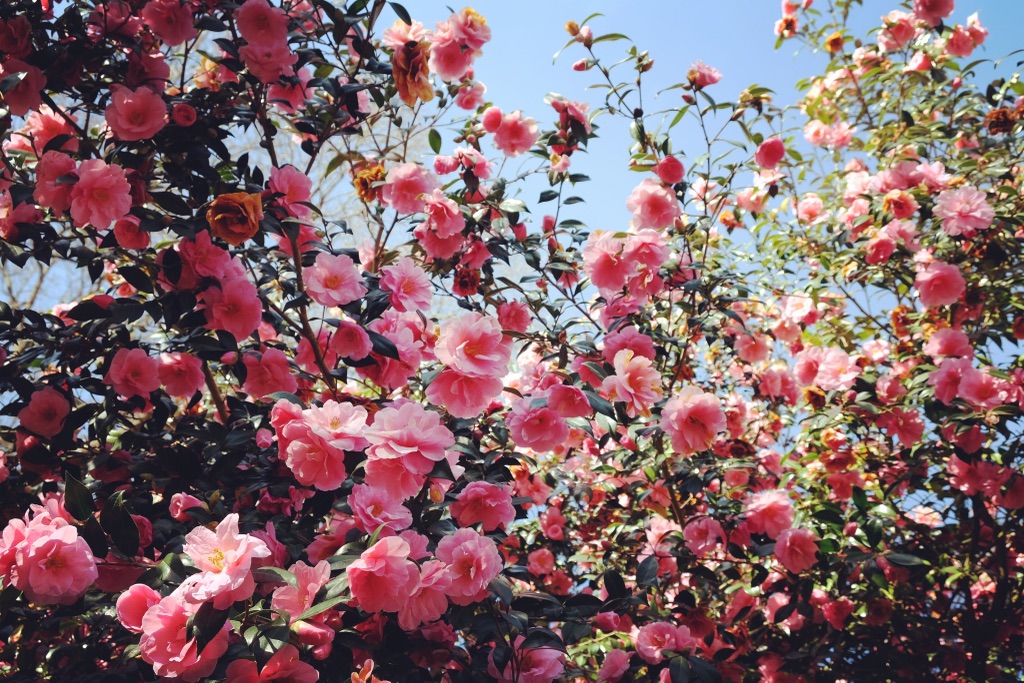
As they develop trunks and most of them attain heights of 4-10m, they are not exactly bedding plants unless you actively prune them for size and shape.
You could put a few of the following varieties right to the rear of your bed, where they will provide a nice green backdrop in spring-summer, but will show off their own lovely blossoms during the more problematic half of the year.
True, their renowned fragrances will be lost if they’re stuck at the rear of a garden bed, so if you have a bed positioned against the wall of your house, site camellias to the rear of that bed.
Camellia Varieties

‘Plantation Pink’ bears large single or semi-double soft pink flowers with conspicuous yellow stamens.
It has one of the shorter flowering seasons but will cover at least late autumn and early winter.
Among our selected varieties it comes the closest to being a proper bedding plant.

‘Rainbow’ bears large single flowers that are white with soft pink tinges and flush around the edges with prominent stamens making a yellow centre.
It starts blooming in early autumn and continues until early winter at least, growing to be a good-sized little tree.
‘Hugh Evans’ produces rosy pink flowers set off by the conspicuous yellow stamens.
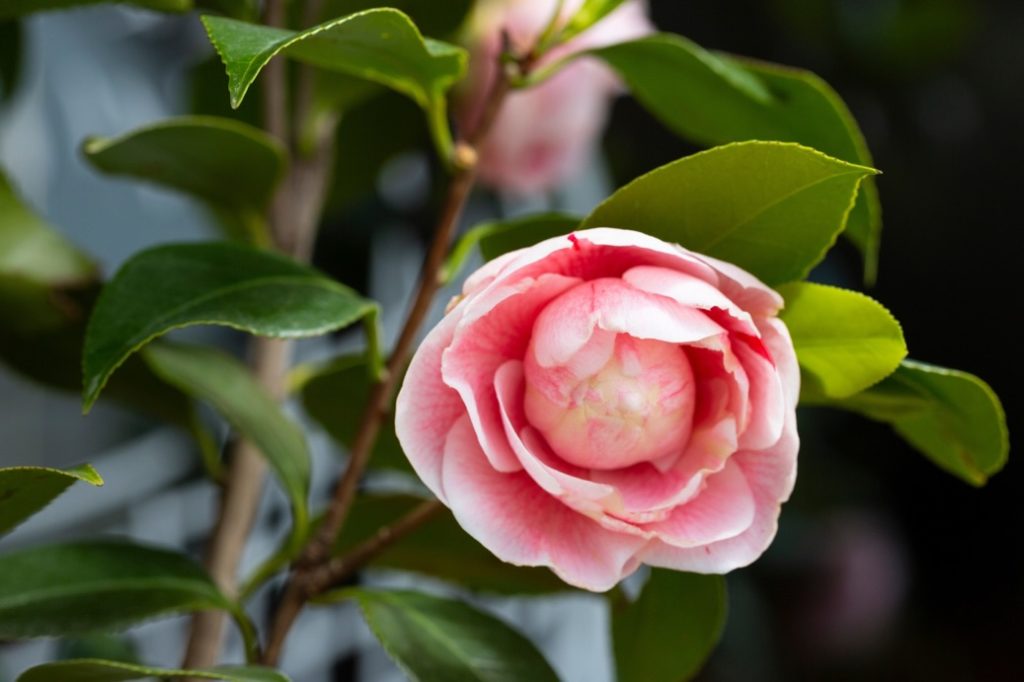
It starts flowering late in autumn but also goes very deep into winter, growing to be a small shrubby tree.
‘Narumigata’ bears single flowers that are white with rosy pink tinges and flushes on the edges with bright yellow centres courtesy of the prominent stamens.
It has a comparatively long flowering season that covers most of the autumn and most of the winter.
It can grow to be a small shrubby tree.

‘Mignonne’ produces probably the finest flowers – they are double form, have fuller petals, and maintain their shapes and forms.
They occur in soft pink to rich pink and have noticeable yellow stamens.
It starts blooming on the dot of autumn and continues through to mid-winter and this variety too can grow to be a small shrubby tree.
References
- 1Brassica oleracea | ornamental cabbage. (n.d.). Royal Horticultural Society. Retrieved March 10, 2023, from https://www.rhs.org.uk/plants/106078/brassica-oleracea-ornamental-cabbage-wild-cabbage/details
- 2Viola tricolor. (n.d.). Royal Horticultural Society. Retrieved March 10, 2023, from https://www.rhs.org.uk/plants/19017/viola-tricolor/details
- 3Cyclamen. (n.d.-b). Kew Royal Botanic Gardens. Retrieved April 17, 2023, from https://powo.science.kew.org/taxon/urn:lsid:ipni.org:names:32774-1
- 4Chrysanthemum yezoense | Hokkaido chrysanthemum. (n.d.). Royal Horticultural Society. Retrieved March 10, 2023, from https://www.rhs.org.uk/plants/122802/chrysanthemum-yezoense/details
- 5Chimonanthus praecox | wintersweet. (n.d.). Royal Horticultural Society. Retrieved March 10, 2023, from https://www.rhs.org.uk/plants/29215/chimonanthus-praecox/details

